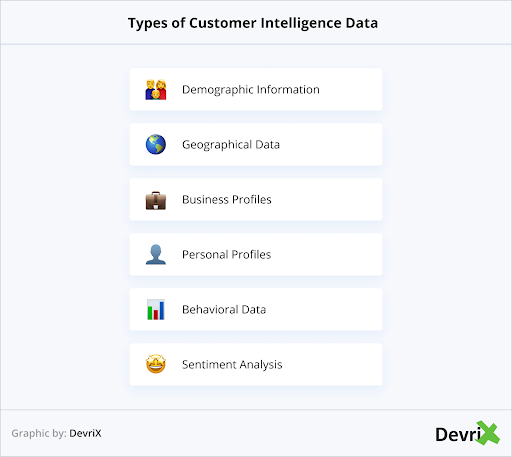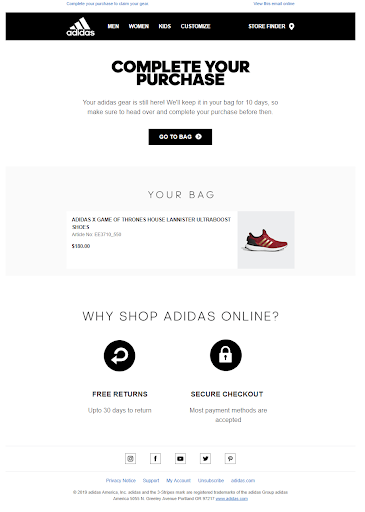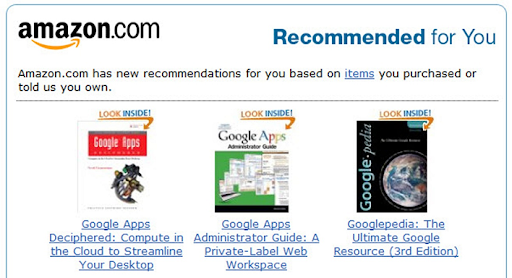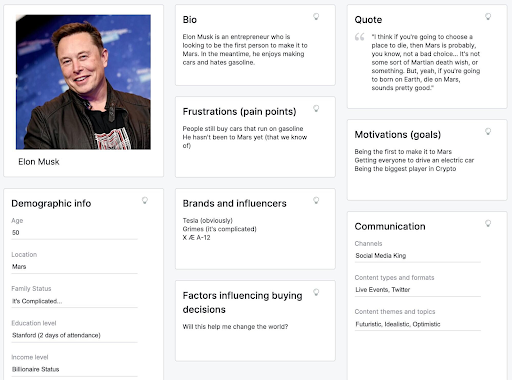Sam Makad
Sam Makad is a business consultant. He helps small & medium enterprises to grow their businesses and overall ROI. You can follow Sam on Twitter, Facebook, and Linkedin.
Discover how to enhance your marketing strategy using customer intelligence. Gain valuable insights and implement data-driven approaches to optimize your campaigns.
The post-pandemic era has witnessed brands rediscovering themselves amid a transformative journey. They have been compelled to reimagine their marketing strategies, armed with the power of data and insights, enabling them to make intelligent and informed decisions.
The marketing strategy in today’s time requires staying ahead of the game, and one of the many ways to do this is to understand consumer behavior. It requires knowing customer actions to gain valuable insights into the intricacies of the omnichannel experience. And such data patterns will help customer intelligence.
This insightful approach has prompted 46% of retailers to express their intention to boost investments in digital channels throughout the current year. Imagine having an unparalleled understanding of your customers, delving so deep into their psyche that you can precisely anticipate their needs and future actions.
To anticipate customers' future wants and needs, stores may use complex algorithms to examine their shopping histories. As a result, stores may provide each client with more relevant and individualized advertisements, discounts, and suggestions for additional purchases.
Let us first explore what customer intelligence is.
Customer intelligence involves all efforts made to know your customers. It's like having coffee with every customer, listening to their needs, likes, and dislikes. Later, these insights are used to create a marketing strategy that feels like a warm, personal chat.
Getting an in-depth understanding of customers allows organizations to elevate interactions and provide tailored experiences. Moreover, this supports the business in its revenue marketing efforts, where each action is focused on driving revenue. Simply put, understanding the meaning of revenue marketing requires knowing how to devise and execute customer-centric strategies that directly impact revenue generation.
Marketers must leverage customer intelligence for enhanced customer communications, advanced segmentation strategies, and optimal campaign planning. Over time, such an approach improves customer journeys and propels the organization towards sustained revenue growth.
Let us explore some of the key types of customer intelligence data.

It is one of the most traditional forms of customer intelligence, which includes basic information such as a customer's age, gender, income level, occupation, educational level, and geographic location.
For instance, a retailer might identify a core demographic of females aged 25-34 living in urban areas and use this insight to shape their marketing strategies and product offerings.
Transactional data is the information captured whenever a customer interacts with your brand. It contains data on whether the customer made a purchase, returned an item, or even added something to their online shopping cart but didn’t complete the transaction.
Analyzing such data provides insights into customers' preferred products or services, how often they make purchases, their average spending, and more.
Beyond transactions, behavioral data examines customer-retailer interactions. Examples are website surfing history, social media participation, email open and click-through rates, mobile app usage, and loyalty program or mobile device-tracked in-store behavior.
A customer visit to the website might reveal how they investigate things, what attracts them, and what makes them buy.
Psychographic data shows you "why" your customers do what they do since it involves examining customer values, interests, lifestyles, and personalities. Moreover, some shoppers are driven by sustainability and want products representing their environmental beliefs. Others prioritize convenience and favor companies with speedy delivery and simple returns.
Therefore, psychographic data help retailers to better engage with consumers by understanding their underlying motives.
All the above-mentioned types of customer intelligence data play a crucial role in the modern retail landscape. Therefore, integrating these insights enables retailers to comprehensively understand their customers and deliver experiences to match (or even surpass) their expectations.
Let us check out some customer intelligence examples to understand how businesses can leverage these insights to optimize customer experiences.
There are countless ways that marketers can use CI to personalize communications with customers and improve the customer experience.
Below are some of the major examples that illustrate customer intelligence.
Personalization of email marketing: Uncovering and analyzing patterns of a customer's purchase history or browsing habits provides the data to create personalized email marketing campaigns. This is useful in recommending relevant products or services to a targeted audience, thereby improving the chances of boosting engagement and conversion rates. You can leverage email finder tools to maximize such outreach efforts.
Here’s an example of how Adidas sends personalized emails to customers who’ve left products in their cart.

Better customer service: Customer intelligence can help understand customers' problems and complaints. Analyzing such data can improve business products or services or provide more effective customer service solutions. Advanced analytics tools or AI can be used to dig deep into the data and reveal insights that may take time to be obvious.
For example, if several customers complain about a specific product feature, it might indicate a design flaw.
Customer-initiated recommendations: Providing each user with the most relevant content is possible using customer data. This enables promoting products and services most likely to excite individual consumers' interest.
Performing such actions needs examining each customer’s most recent searching and buying habits and then providing product suggestions based on those observations.
For instance, Amazon uses customer intelligence to provide personalized recommendations to its users based on their browsing and purchasing history.

It makes users feel understood and appreciated, enhancing brand loyalty and driving additional sales.
Customer Intelligence CI transforms marketing by revealing customer behavior, preferences, and trends. In turn, businesses leverage such data to customize campaigns that can boost engagement and conversion rates.
Moreover, CI enables predicting future customers’ behaviors, facilitating better product development and service delivery. For instance, one aspect of customer intelligence includes predictive modeling that anticipates client wants and provides timely, tailored offerings.
Here are some of the major ways how customer intelligence can optimize marketing.
You can tap into much of the customer intelligence insights by leveraging analytics as a part of the customer intelligence. A range of data analytics tools can help to process and analyze large amounts of customer data effectively.
For instance, Hotjar can help you analyze the part of the website that is most clicked, read, and viewed by a visitor by offering a website heatmap. Similarly, plethora or only do these cutting-edge tools assist in efficiently handling vast volumes of data since they possess the remarkable capability to anticipate customer behavior, recognize patterns, and provide valuable insights into the desires and needs of your esteemed clientele.
Now, let's remember the incredible power of real-time analytics. With the help of these cutting-edge tools, you can effortlessly access real-time insights into customer behavior, empowering you to respond swiftly and make well-informed decisions.
Let us check out a couple of examples of using such real-time analytics.
Customer retention: An online retailer notices through data analysis that customers who experienced slow delivery time didn't return to shop again. They can address this issue by improving their logistics and shipping process to enhance customer satisfaction and retention.
Targeted marketing campaigns: A beauty brand may analyze customer purchase history and discover that a certain segment only buys organic products. Boosting sales requires them to launch a marketing campaign targeting this group, highlighting their organic range.
Many analytics tools and algorithms are available to analyze customer data from various channels. These tools facilitate audience grouping or segmentation based on similar patterns in the collected data.
Customer lifetime value (CLV) forecasting: Customer Lifetime Value (CLV) refers to the total revenue a business can expect from a single customer account throughout their relationship.
It's a crucial metric in business as it helps companies understand the value each customer brings, which can inform decisions about marketing spend, customer acquisition, and retention strategies.
CLV forecasting requires average purchase value, customer acquisition costs, and retention rate.
Here's a simplified method to calculate CLV:
Customer behavior modeling: This methodology uses statistical methods to organize customers by buying behavior, product consumption, and company interaction. It helps marketers and businesses build strategies that satisfy consumer requirements by understanding their motivations.
Machine learning: This powerful technology is driven by algorithms that can analyze massive consumer data and find trends. It helps forecast consumer behavior, find hidden customer categories, and tailor marketing communications to improve conversions and enhance digital customer experience.
Predictive customer analytics: Another methodology that leverages historical data, statistical algorithms, and machine learning to predict future customer turnover or purchase outcomes. Such data helps organizations anticipate challenges and capture opportunities.
Actionable insights: Data-driven insights that organizations may use instantly. They turn raw data into actionable knowledge. After a service change, customer satisfaction may diminish, prompting a review and revision of the new service policy.
The digital world has many consumers who may land on your website or discover your product from almost anywhere, partly because businesses use multiple advertising platforms and marketing methods to attract their target audience.
Utilizing customer intelligence in marketing involves assessing data to determine which strategies yield the best results and where productivity improvements can be made.
Sales data analysis: Reviewing sales data can help identify which products are best sellers and which are not. This can inform decisions about product development, inventory management, and marketing focus.
Process analysis: Evaluate the efficiency of your marketing processes by looking for tasks that take longer than they should or contribute less to the end goal. Consider leveraging automation tools to eliminate tedious tasks and save time for more strategic work.
A/B testing: Using this methodology to leverage customer intelligence will require testing two variations of a marketing strategy and checking which performs better. For example, sending two different email designs to different audience subsets can help identify which layout encourages more engagement.
Customer feedback: This is a powerful survey tool to gain customer feedback that helps identify what aspects of your product or service are most appreciated by customers and where improvements can be made.
Performance metrics analysis: This is an analysis method to assess the metrics tied to each strategy, like click-through rates for email campaigns, conversion rates for landing pages, or engagement rates for social media campaigns.
Any strategy with significant high-performing numbers can be those with superior metrics.
However, devoting additional effort to gaining consumer intelligence insights reveals successful sales strategies. You may also identify the underperforming ones and determine how to improve them. By identifying high-performing strategies, you will train your sales team to effectively use them to improve productivity and drive ROI.
With more than 4.8 billion active users, social media offers a treasure trove of information on your target audience. Social listening alerts you whenever your business is referenced in a discussion on social media or any other online platform.
Information gleaned through social listening may tell you when and where your brand was discussed, by whom, and in what context. You will also better understand your position about similar businesses.
Let’s take a quick look at how businesses can leverage customer intelligence for social listening:
Use social listening tools: These tools help you monitor and gather relevant conversations and mentions. Some examples are Brand24, Hootsuite, Sprout Social, and Mention. These platforms can track your defined keywords across various platforms and compile the data in a manageable format.
Build customer personas: Build customer personas based on your gathered insights since these fictional, generalized characters encompass the various needs, goals, and observed behavior patterns among your real and potential customers.
Below is the customer persona of Elon Musk.

Engage and respond: Social listening goes beyond simply gathering data, it also involves engagement in responses to comments, thanking customers for positive reviews, and addressing negative feedback professionally.
Use actionable insights: Use the findings based on customer intelligence to check for any common complaint and address it. If customers love a product or feature, consider highlighting it more in marketing. Such aspects help inform your product development, customer service, and overall business strategy.
Social listening and customer intelligence remain ongoing processes where changing trends, addressing new problems, and resolving customer needs remain pivotal. Therefore, monitoring online conversations helps connect with clients and meet them where they are.
In today's data-driven corporate world, consumer intelligence is essential. It helps you understand your customers and provides the step-by-step process of leveraging consumer insight to modify your marketing strategy.
Quality data from several sources can set a suitable base. Gradually, marketers can start using transactional, consumer, social media, and market research data are examples. It is necessary to analyze and interpret the data to reveal consumer behavior, preferences, and expectations.
Following customer intelligence can tremendously impact your marketing approach, but it is best not to replace personal contact. Successful marketing strategies combine data-driven insights with human-centered methods.
You’ll also receive some of our best posts today

Sam Makad is a business consultant. He helps small & medium enterprises to grow their businesses and overall ROI. You can follow Sam on Twitter, Facebook, and Linkedin.
Advancing in your career is an ongoing process that...
In the business world, as in all areas of...
Creating adequate content for audience can be difficult in...

User reviews are a game-changer for e-commerce. Consumers rely heavily o...
Don’t miss the new articles!